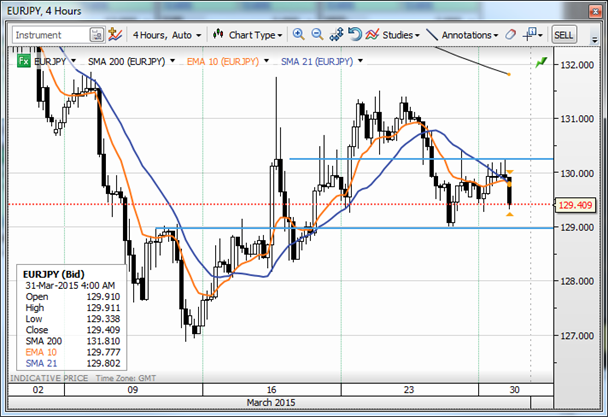We’re waking up this morning to the Greece situation turning very serious, as Greece's prime minister Alexis Tsipras and company continue to drag their feet in negotiations with their creditors, and as there is a clear effort to cozy up with Russia in an effort to find leverage.
On the latter, this is very serious business and is going to rapidly lead to a Grexit scenario if pursued with any real vigour.
There is nothing to wring from creditors with brinkmanship of this kind – Greece will either comply with minor concessions or it will receive the boot. Is this Putin gambit a dangerous new game theory-inspired move by Greek finance minister Yanis Varoufakis?
The Greek leadership is clearly desperate, and will have to go back on its election promises if Greece is to stay in the EU, which is what makes this situation somewhat fluid and dangerous.
And what about the Greek population, which is anti-austerity, but still very much pro-euro and pro-EU membership? The timeline on Greece is rapidly picking up here, with some estimates that Greece will not have sufficient liquidity as soon as April 8 – the same day as a Tsipras visit to Russia. Stay tuned and be careful of euro crosses on all of this, which will rapidly become prone to extreme headline risk over the coming days.
The AUD is very weak on a continued downside in iron ore prices and worries on Chinese growth. The market is rapidly pricing in a rate cut at next Tuesday’s Reserve Bank of Australia meeting and two-year AUD swap rates have descended to a new low for the cycle well below 200 basis points. Iron ore prices are less than half of where they were at the beginning of 2014 and have fallen over 25% just since the beginning of this year.
CAD has joined the weak commodity currency theme and NZD is weaker against the USD and JPY, if not against AUD. As for NOK, it has tended to the weak side on the weak oil prices against the euro, but it will be interesting to see what weighs heavier in investors’ sentiments – Grexit worries as a euro negative or weak oil prices as a krone negative.
Chart: EUR/JPY
EUR/JPY will likely feel considerable pressure if Europe equity traders pull back from their European Central Bank quantitative easing focus and ponder the risk-negative implications of a Greek exit if Greece and its creditors remain at loggerheads in their negotiations over the next couple of weeks. Still, we’re in the middle of the range, and the pair needs to take out the 129.00 area to show signs of developing momentum toward the lows for the cycle just below 127.00.

The G-10 rundown
USD: Generally at the top of the heap since late yesterday, with further confirmation as EUR/USD drops below 1.0800 overnight as fresh Greece worries weigh on the euro. Still, all USD pairs are still within the range.
EUR: Weakening a bit on the Greece situation, and one would think that there is plenty more room for this to develop, given that the euro has actually been quite strong over the last couple of weeks.
JPY: Weaker against the USD, but USD/JPY still within acceptable retracement range for those continuing to look for a sell-off. Other JPY crosses much heavier and could get more so if markets go risk-off.
GBP: Trying to get a leg up against the euro since the recent peak just below 0.7400. Will be reactive to data today and especially tomorrow (manufacturing PMI) for further traction lower in EUR/GBP. Mostly interested in EUR/GBP direction as GBP/USD looks like a low-beta USD trade.
CHF: EUR/CHF under pressure from the Greece story, though USD/CHF continues to look constructive to the upside.
AUD: Very weak as we price in a rate cut at next week’s RBA. Would expect AUD/NZD to bottom for the cycle around that rate cut.
CAD: Weaker oil prices are feeding CAD selling – it still needs to vault back above 1.2800 to get the USD/CAD rally fully back on track. Watch out for the GDP release later today.
NZD: Its star may fade after AUD/NZD bottoms for the cycle, perhaps around next Tuesday’s RBA meeting and potential rate cut. NZD/USD really under pressure now with break below 0.7500.
SEK: Negative vibes on the euro are neutralising the prospects for a move above 9.35 – it may actually be more vulnerable to the downside within the large range toward 9.10 on the Greece situation.
NOK: As we ask above – difficult to trade this pair with both euro-negative (Greece) and NOK-negative factors (oil).
Economic Data Highlights
- New Zealand Feb. Building Permits out at -6.3% YoY vs. -4.6% in Jan.
- UK Mar. GfK Consumer Confidence out at 4 vs. 2 expected and 1 in Feb.
- New Zealand ANZ Activity Outlook/Business Confidence out at 42.2/35.8 vs. 40.9/34.4 in Feb.
- Germany Feb. Retail Sales out at -0.5% MoM and +3.6% YoY vs. +3.4% YoY expected and +5.0% YoY in Jan.
Upcoming Economic Calendar Highlights (all times GMT)
- Germany Mar. Unemployment Change/Unemployment Rate (0755)
- Norway Apr. Norges Bank Daily FX Purchases (0800)
- UK Q4 Current Account Balance (0830)
- UK Final Q4 GDP Revision (0830)
- Eurozone Feb. Unemployment Rate (0900)
- Eurozone Feb. CPI Estimate (0900)
- US Fed’s Lacker to Speak (1155)
- Canada Jan. GDP (1230)
- Eurozone ECB’s Nouy to Testify before EU Parliament (1300)
- US Jan. S&P/CaseShiller House Price Index (1300)
- US Mar. Chicago PMI (1345)
- US Mar. Consumer Confidence Index (1400)
- Australia Mar. AiG Performance of Manufacturing Index (2230)
- New Zealand Mar. QV House Prices (2300)
- Japan Q1 BoJ Tankan Survey Report (2350)
- Australia Feb. Building Approvals (0030)
- China Mar. Manufacturing PMI (0100)
- China Mar. Non-manufacturing PMI (0100)
- Japan Mar. Final Markit/JMMA Manufacturing PMI (0135)
- China Mar. Final HSBC (LONDON:HSBA) China Manufacturing PMI (0145)
